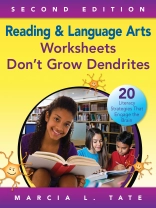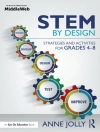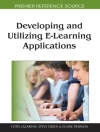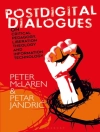Brain-based strategies turn reluctant readers into motivated and engaged learners!
Experts say that when students engage in learning, comprehension is more likely to occur. Building on Marcia Tate’s 20 successful ‘dendrite-growing’ teaching strategies, Reading and Language Arts Worksheets Don’t Grow Dendrites, based on the very latest research, contains more than 200 activities for delivering brain-based literacy instruction.
Now in a new, reader-friendly format and consistent with the Common Core State Standards, this classroom companion is dedicated to improving the way students learn to read and read to learn. You’ll discover hands-on techniques grouped by grade level and standard to help teach reading in relevant ways. Activities cover essential categories of literacy and language arts instruction, including
- Phonemic and phonological awareness
- Fluency and vocabulary instruction
- Text comprehension
- Writing
- Speaking and listening
- Language
- Cross-curricular instruction
- Reading literacture and information text
When teachers understand how to plan and execute great lessons and when students are involved and engaged, true learning occurs. Start today!
Praise for the previous edition:
‘I thoroughly enjoyed reading this user-friendly book and plan to share the activities with teachers working with struggling readers.’
—Catherine Duffy, English Chairperson
Three Village Central School District, East Setauket, NY
विषयसूची
Acknowledgments
About the Author
Introduction
Strategy 1: Brainstorming and Discussion
What: Defining the Strategy
Why: Theoretical Framework
How: Instructional Activities
Reflection and Application
Strategy 2: Drawing and Artwork
What: Defining the Strategy
Why: Theoretical Framework
How: Instructional Activities
Reflection and Application
Strategy 3: Field Trips
What: Defining the Strategy
Why: Theoretical Framework
How: Instructional Activities
Reflection and Application
Strategy 4: Games
What: Defining the Strategy
Why: Theoretical Framework
How: Instructional Activities
Reflection and Application
Strategy 5: Graphic Organizers, Semantic Maps, and Word Webs
What: Defining the Strategy
Why: Theoretical Framework
How: Instructional Activities
Reflection and Application
Strategy 6: Humor
What: Defining the Strategy
Why: Theoretical Framework
How: Instructional Activities
Reflection and Application
Strategy 7: Manipulatives, Experiments, Labs, and Models
What: Defining the Strategy
Why: Theoretical Framework
How: Instructional Activities
Reflection and Application
Strategy 8: Metaphors, Analogies, and Similes
What: Defining the Strategy
Why: Theoretical Framework
How: Instructional Activities
Reflection and Application
Strategy 9: Mnemonic Devices
What: Defining the Strategy
Why: Theoretical Framework
How: Instructional Activities
Reflection and Application
Strategy 10: Movement
What: Defining the Strategy
Why: Theoretical Framework
How: Instructional Activities
Reflection and Application
Strategy 11: Music, Rhythm, Rhyme, and Rap
What: Defining the Strategy
Why: Theoretical Framework
How: Instructional Activities
Reflection and Application
Strategy 12: Project-Based and Problem-Based Instruction
What: Defining the Strategy
Why: Theoretical Framework
How: Instructional Activities
Reflection and Application
Strategy 13: Reciprocal Teaching and Cooperative Learning
What: Defining the Strategy
Why: Theoretical Framework
How: Instructional Activities
Reflection and Application
Strategy 14: Role Plays, Drama, Pantomimes, and Charades
What: Defining the Strategy
Why: Theoretical Framework
How: Instructional Activities
Reflection and Application
Strategy 15: Storytelling
What: Defining the Strategy
Why: Theoretical Framework
How: Instructional Activities
Reflection and Application
Strategy 16: Technology
What: Defining the Strategy
Why: Theoretical Framework
How: Instructional Activities
Reflection and Application
Strategy 17: Visualization and Guided Imagery
What: Defining the Strategy
Why: Theoretical Framework
How: Instructional Activities
Reflection and Application
Strategy 18: Visuals
What: Defining the Strategy
Why: Theoretical Framework
How: Instructional Activities
Reflection and Application
Strategy 19: Work Study and Apprenticeships
What: Defining the Strategy
Why: Theoretical Framework
How: Instructional Activities
Reflection and Application
Strategy 20: Writing and Journals
What: Defining the Strategy
Why: Theoretical Framework
How: Instructional Activities
Reflection and Application
Resource A: Brain-Compatible Lesson Design
Resource B: Graphic Organizers
Bibliography
Index
लेखक के बारे में
Marcia L. Tate, Ed D, is the former executive director of professional development for the De Kalb County School System in Decatur, Georgia. During her thirty-year career with the district, she has been a classroom teacher, reading specialist, language arts coordinator, and staff development executive director. Marcia is currently an educational consultant and has taught over 500, 000 administrators, teachers, parents, and business and community leaders throughout the world. She is the author of the eight books in the best-selling Worksheets Don’t Grow Dendrites series and four additional books: Formative Assessment in a Brain-Compatible Classroom: How Do We Really Know They’re Learning?, 100 Brain-Friendly Lessons for Unforgettable Teaching and Learning K–8, and 100 Brain-Friendly Lessons for Unforgettable Teaching and Learning 9–12, and her latest book, Healthy Teachers, Happy Classrooms that is designed to address both the personal and professional lives of all educators. Participants in her workshops refer to them as some of the best ones they have ever experienced since Marcia uses the twenty strategies outlined in her books to actively engage her audiences. Marcia received her bachelor’s degree in psychology and elementary education from Spelman College in Atlanta, Georgia. She earned her master’s degree in remedial reading from the University of Michigan in Ann Arbor, her specialist degree in educational leadership from Georgia State University, and her doctorate in educational leadership from Clark Atlanta University. Marcia is married to Tyrone Tate and is the proud mother of three children: Jennifer, Jessica, and Christopher, and nine grandchildren: Christian, Aidan, Maxwell, Aaron, Roman, Shiloh, Aya, Noah, and Alyssa. Marcia and her husband own the company Developing Minds, Inc. and can be contacted by calling the company at (770) 918-5039, emailing her at marciata@ bellsouth.net, or by visiting her website at www.developingmindsinc.com. You can also follow her on Twitter and Instagram at @Dr Marcia Tate.












